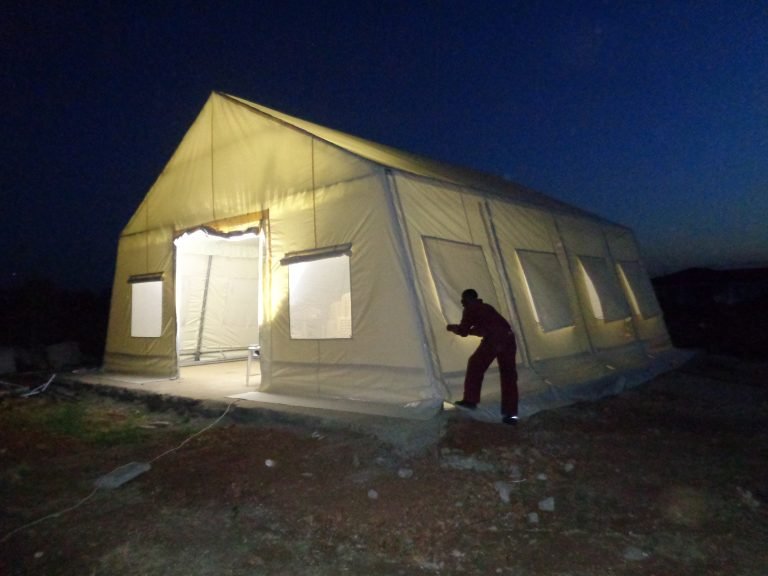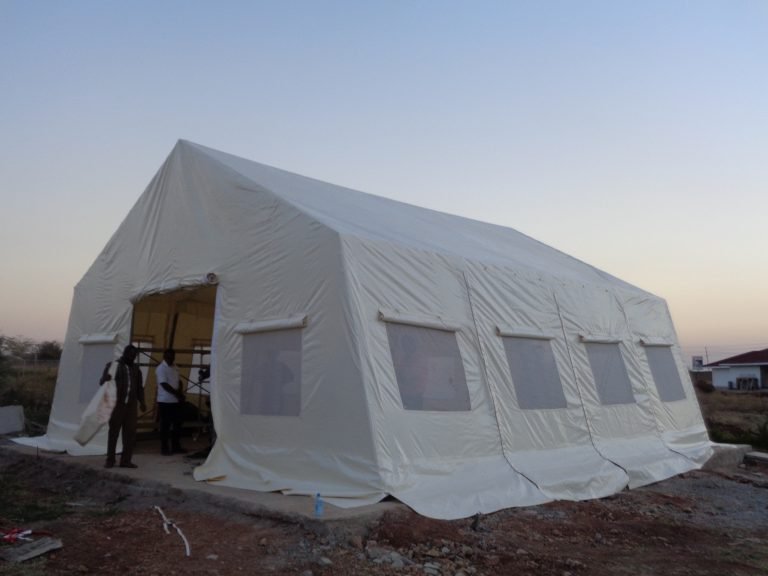Posted by Asim on Apr 6, 2020, 11:44:23 AM
Emergency Mobile Hospitals
Since the first case of COVID-19 in Kenya was announced in mid-March Tarpo has been offering our expertise in rapid deployment of emergency response field hospitals.
Our clients who work in remote area operations are having to bring their work stations to urban areas while a few private hospitals are navigating the compromises they are going to need to make as they expand their capacities temporarily, to make the best out of worst case scenarios.

Working Together
At Tarpo we’ve been involved in mobile hospitals and semi-permanent camp deployment for NGO’s, militaries and the mining sector for over 20 years, mainly on the African continent. We’ve worked together with our clients to deploy solutions that are unique for the needs of African terrains, climates and end-users. The key words here are that we’ve worked together.
A lot of people (read: procurement departments of private hospitals) have reached out saying “we need tents to deal with this emergency”. But that isn’t even the half of it. That’s why we’re sharing extracts of the collaborative approach we are part of, and leading on in some cases, in field hospital deployment in the context of COVID-19. This is not a perfect approach by any means because the disease has a velocity that the world is struggling to predict and we are dealing with a much wider demographic in high density locations. The template borrows heavily from our experience in military camp deployments in remote areas.
- Identify the medical priorities that are to be dealt with. Triage, symptomatic relief, diagnosis, recovery, quarantine, intensive care, surgical etc. Given the speed at which we must deploy we cannot do all of those in one go. One of our clients is working on a ‘respiratory illnesses only’ hospital to handle only patients suspected of COVID-19.
- Identify the capacity and layout of the hospital based on the medical priorities being dealt with. This includes patient movement, medical staff movement, vehicles, external service provision involving fuel, water, food, waste removal, biohazard management. The layout must allow efficient operations while maintaining the hygiene and quarantine requirements for those who come into contact with patients. This then creates additional resource requirements – medical staff must be accommodated within the camp. They are likely to be there for an indefinite period of time and so living quarters must enable them to live a comfortable life and perform at optimal levels. The respiratory illnesses hospital will have the capacity for 200 patients at various stages of the illness and this will equate to roughly 600 medical workers living on site.
- Capacities and priorities dictate resource requirements. For example, how many medical workers are required for a 5-bed ward? If we have 20 wards is that multiplied by X or are we able to gain economies of scale? How about if 5 of those wards are for intensive care? So we are calculating water, food, fuel, waste removal etc requirements for a Y number of patients and Z number of medical workers.
- Modern emergency medicine relies heavily on power. Ventilators require electricity and so 100% uptime is necessary. Generators, uninterrupted power supply, cabling, sockets, lighting are all required. What is the power demand of the hospital machinery? What kind of redundancy are we designing into this localised power grid? How reliable is the local electricity provider and how quickly can they connect us to the wider grid?
- Ablution facilities need clean water supply and waste removal. Do we do this per ward or centrally? Over ground or underground? Is there water supply on site and if not, how are we bringing this in? What kind of quantities are we looking at and how do we store it? Do we need to purify it after it arrives on site?
- What is the location of this hospital? And the ground condition? Are we close enough to an urban area to make external services cost effective? Do we need to prepare the ground in a particular way? Do we have the time to prepare it and if yes how do we do that?
- What are the communication and transport links like? Road access needs to be considered and do our medical priorities require us to also have aircraft access of some kind close by? How do we communicate internally in the hospital as well as externally?
That’s a summary of some of the questions and challenges that we are trying to answer, iteratively for some projects. Costs are a major influencer on the solution that is being put together and they need to consider the upfront cost of establishing the hospital but also the daily operating costs.

How is Tarpo involved?
Many will be reading this wondering how Tarpo comes into such a project. Well we are a temporary shelter solutions provider and so we design, specify and propose the shelter aspects of this which have their own interconnectedness. Take the example of a hospital tent – does it need a floor or not? If not, will the hospitals beds be able to move on the ground if it’s not concrete? If it needs a groundsheet what kind of disinfection methods and chemicals will be suitable and safe? How do we bring the electric cables into the ward – along the frame of the tent, along the sides or underground? What provision does the design need to make for the cables? Perhaps we don’t know right now but we need to deploy quickly so we fabricate with an assumption that all possibilities are highly likely.
Our secondary involvement is in the accommodation aspects for medical workers so that they are able to rest in comfort and continue to perform at their best for as long as we need them to. We have long-term lease options available for all our accommodation equipment allowing hospitals to scale up and down as the needs require.
We do all of this with compassion for humanity, especially at a time like this when we are realising that we only have each other during this disaster.